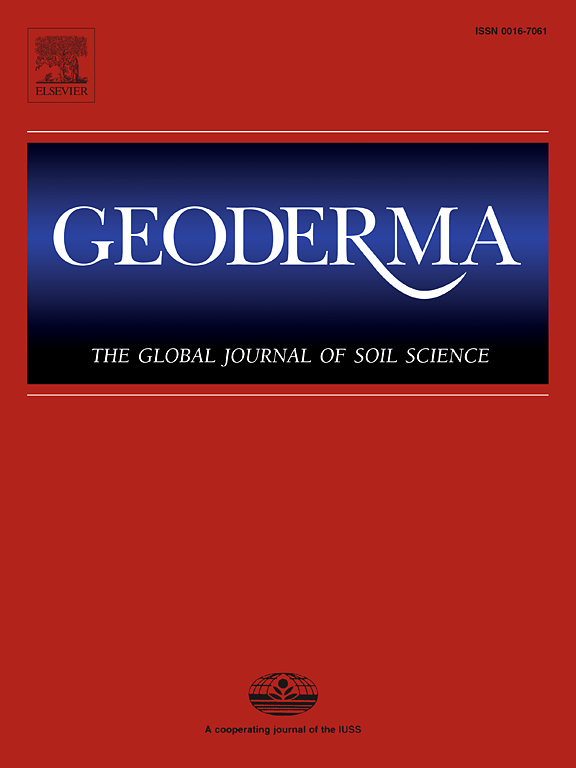Storage at room temperature is a cost-effective and practical preservation method for dry biocrust microbial communities
IF 5.6
1区 农林科学
Q1 SOIL SCIENCE
引用次数: 0
Abstract
Microbial communities within biocrusts fulfill important ecological functions, particularly in dryland environments. Identifying the optimal conditions for transporting and storing biocrusts is essential to preserve and accurately analyze their microbial communities. However, the effectiveness of these preservation methods remains poorly understood. In this study, we collected dry biocrusts at different developmental stages (shifting sand, cyanobacteria-dominated, and moss-dominated) from the Qbuqi Desert in northern China. We examined the effects of different storage conditions, i.e. at room temperature (25 ± 2 °C) and low temperature (4 °C and −80 °C) over one month on the microbial community characteristics, including species composition, abundance and diversity. Our findings demonstrated that microbial community differences among the biocrust developmental stages were maintained even after one month of storage at room temperature. Compared to the control (analyzed immediately after sampling), storing biocrusts at 25 °C and 4 °C did not significantly alter biocrust assemblages, whereas storage at −80 °C increased the estimated gene copy number of Proteobacteria in cyanobacteria-dominated biocrusts. Furthermore, our results suggest that biocrust developmental stage and microbial community composition had minimal impact on the effectiveness of different storage methods, though caution should be kept for the prokaryotic communities. Overall, we recommend storing dry-collected biocrusts at room temperature as an effective and economic method for preserving microbial communities, particularly for DNA-based microbial studies from dryland soils with frequent monitoring of biocrust development at remote areas.
室温储存是一种经济实用的干生物菌群保存方法
生物簇中的微生物群落具有重要的生态功能,尤其是在干旱地区的环境中。确定运输和储存生物簇的最佳条件对于保存和准确分析其微生物群落至关重要。然而,人们对这些保存方法的有效性仍然知之甚少。在这项研究中,我们从中国北部的库布齐沙漠采集了处于不同发育阶段(流沙、蓝藻为主和苔藓为主)的干燥生物簇。我们研究了不同储存条件(室温(25 ± 2 °C)和低温(4 °C和-80 °C)一个月对微生物群落特征(包括物种组成、丰度和多样性)的影响。我们的研究结果表明,即使在室温下储存一个月后,生物脆皮发育阶段之间的微生物群落差异仍能保持。与对照组(取样后立即分析)相比,在 25 °C 和 4 °C 下储存生物簇并不会显著改变生物簇的组合,而在 -80 °C 下储存则会增加蓝藻为主的生物簇中变形菌的估计基因拷贝数。此外,我们的研究结果表明,生物簇的发育阶段和微生物群落组成对不同储存方法的效果影响甚微,但对原核生物群落应保持谨慎。总之,我们建议将干采集的生物簇储存在室温下,这是一种有效且经济的微生物群落保存方法,尤其适用于在偏远地区经常监测生物簇发育情况的旱地土壤中进行基于 DNA 的微生物研究。
本文章由计算机程序翻译,如有差异,请以英文原文为准。
求助全文
约1分钟内获得全文
求助全文
来源期刊

Geoderma
农林科学-土壤科学
CiteScore
11.80
自引率
6.60%
发文量
597
审稿时长
58 days
期刊介绍:
Geoderma - the global journal of soil science - welcomes authors, readers and soil research from all parts of the world, encourages worldwide soil studies, and embraces all aspects of soil science and its associated pedagogy. The journal particularly welcomes interdisciplinary work focusing on dynamic soil processes and functions across space and time.
 求助内容:
求助内容: 应助结果提醒方式:
应助结果提醒方式:


